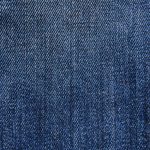When you consider the challenges of producing ring spun cotton, you'll quickly realize that it's not just about raw materials. Variability in fiber length can create problems with yarn thickness, while machinery maintenance often disrupts your workflow. To add to that, the high energy demands of the machinery can significantly inflate costs and raise environmental concerns. Plus, maintaining a skilled workforce is crucial to avoid inefficiencies. With these hurdles in play, how do manufacturers ensure a balance between quality and production? The answers might surprise you.
Table of Contents
Raw Material Quality
When it comes to producing ring spun cotton, the quality of raw materials can make or break the entire process. You need to start with high-grade cotton fibers, as these influence the final product's strength, softness, and appearance. If you're using low-quality fibers, your finished cotton won't meet the standards expected by consumers, and you might face significant losses.
Selecting the right cotton involves thorough evaluation. You should focus on the fiber's cleanliness, maturity, and fineness. If impurities are present, they can lead to weak yarns that fray easily during weaving. Also, keep an eye on moisture levels; too much moisture can lead to mildew and spoilage.
It's crucial to source your cotton from reputable suppliers who follow strict quality control measures. Don't overlook the importance of fiber grading; a slight variation can greatly impact your production efficiency and end product quality.
Fiber Length Variability
Raw material quality isn't just about cleanliness and maturity; fiber length variability plays a significant role in affecting the spinning process and the final yarn's characteristics. When fibers vary in length, it can lead to several challenges that impact your production efficiency and yarn quality.
You might encounter:
- Inconsistent yarn thickness: Variations can cause uneven spinning, resulting in yarn that's thicker in some areas and thinner in others.
- Increased breakage rates: Longer fibers might tangle and create thicker slubs, while short fibers can lead to more frequent breakage during spinning.
To tackle these issues, you should prioritize sourcing uniform fiber lengths and implement strict quality control measures.
It might also be beneficial to invest in advanced testing technologies that assess fiber length before production. By addressing fiber length variability, you enhance not only the spinning process but also the overall quality of your ring spun cotton fabric, making it more appealing to your customers.
Machinery Maintenance Issues
Machinery maintenance plays a crucial role in ensuring smooth and efficient ring spinning operations. Regular upkeep of your equipment helps prevent unexpected breakdowns that can disrupt production and lead to significant losses. You can't ignore the wear and tear on moving parts; machines require constant attention to maintain their functionality and performance.
It's essential to develop a systematic maintenance schedule, including routine checks and timely repairs. Lubricating bearings, replacing worn belts, and adjusting tension can make a big difference in operational efficiency. If you neglect these tasks, you risk lower quality yarn and increased production costs.
Training your staff on proper maintenance procedures is just as important. When your team understands how to care for the machinery, they're less likely to overlook issues that can escalate into larger problems. Consider keeping detailed logs of maintenance activities to spot trends and identify areas needing improvement.
Lastly, invest in quality replacement parts. Using subpar components may save you money in the short term, but it'll likely lead to more frequent breakdowns down the line. Keeping your machinery running smoothly ensures you produce high-quality ring spun cotton consistently.
Energy Consumption Concerns
Energy consumption is a significant concern in ring spinning, directly impacting both operational costs and environmental sustainability. As you delve into the production of ring spun cotton, you'll notice that machinery requires a considerable amount of energy to operate effectively. This requirement not only drives up your expenses but also places a strain on natural resources.
To better understand these concerns, consider the following factors:
- High energy usage: Ring spinning machinery needs continuous power to maintain production, leading to elevated energy bills.
- Carbon footprint: Increased energy consumption translates to higher greenhouse gas emissions, contributing to environmental degradation.
Addressing energy consumption concerns is crucial for optimizing production. By investing in more efficient machinery or alternative energy sources, you can significantly reduce costs while promoting a greener production approach.
As challenges in energy consumption persist, staying informed and proactive in addressing them is vital for the sustainability of your operations in the textile industry.
Production Efficiency Challenges
When you're producing ring spun cotton, achieving optimal production efficiency is often more challenging than it seems, as various factors can disrupt the workflow. For one, machine breakdowns can halt operations, causing delays that affect output. Regular maintenance is crucial, but many facilities struggle to prioritize it adequately.
Another issue is the complexity of adjusting spinning machines to accommodate different yarn specifications. Each shift in product volume or type requires recalibrating equipment, often leading to increased setup times. This not only impacts efficiency but also can result in higher scrap rates if it's not done correctly.
Additionally, training workers effectively is essential. If your team isn't fully up to speed on operating the machines or addressing emerging issues, the overall production line suffers. Lack of consistency in skills or experience can lead to varied quality and inefficiencies.
To overcome these challenges, consider investing in technology and training programs. Streamlining your processes doesn't just improve efficiency—it enhances product quality and reduces waste too. By focusing on these areas, you can turn challenges into opportunities and boost production efficiency in your ring spun cotton operations.
Frequently Asked Questions
How Does Weather Affect Ring Spun Cotton Production?
Weather impacts your ring spun cotton production significantly; excessive rain can cause moisture issues, while droughts lead to reduced yield. You need to monitor climate conditions closely to ensure optimal growth and fiber quality.
What Role Does Humidity Play in the Spinning Process?
Humidity's crucial in the spinning process; it affects fiber moisture levels. Too much or too little can lead to issues like fiber breakage or clumping, which disrupts your spinning efficiency and quality of the final yarn.
Are There Specific Certifications for Organic Ring Spun Cotton?
Yes, there are specific certifications for organic ring spun cotton, like Global Organic Textile Standard (GOTS) and OEKO-TEX. These certifications ensure the cotton meets organic farming standards and sustainable practices throughout its production process.
How Can Producers Ensure Sustainability in Cotton Sourcing?
To ensure sustainability in cotton sourcing, you should prioritize certified organic suppliers, implement water conservation methods, and promote ethical labor practices. Engaging in transparent partnerships with growers can also enhance your sustainability efforts for cotton production.
What Is the Impact of Labor Costs on Ring Spun Cotton Production?
Labor costs directly impact your ring spun cotton production. Higher wages can increase expenses, potentially limiting profitability. Conversely, investing in skilled labor might enhance quality and efficiency, balancing costs with your production goals effectively.
- How Does Ring Spun Cotton Affect Garment Fit and Shape Retention? - August 13, 2024
- What Are the Challenges in Producing Ring Spun Cotton? - August 13, 2024
- Is Ring Spun Cotton Suitable for Plus-Size Clothing? - August 13, 2024






